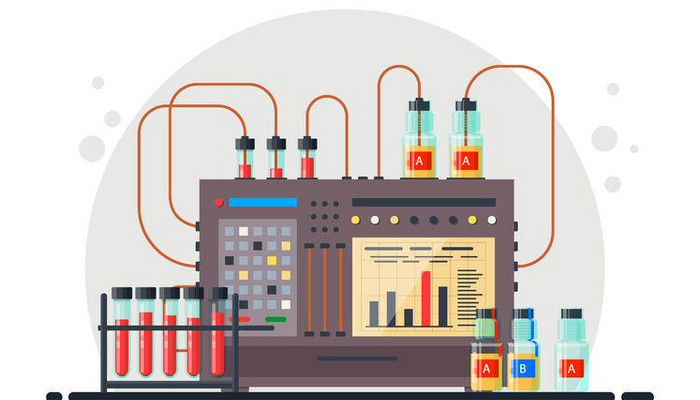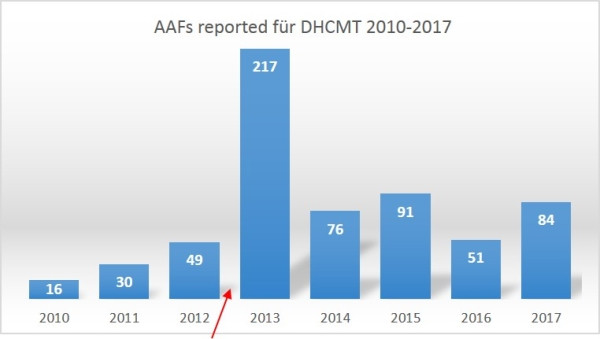Analytische Herausforderungen - Review 2019

Neue Publikation zu Analytischen Herausforderungen in der Dopinganalytik
Thevis M, Walpurgis K, Thomas A.
Analytical Approaches in Human Sports Drug Testing: Recent Advances, Challenges, and Solutions.
Anal Chem. 2019 Oct 31. doi: 10.1021/acs.analchem.9b04639. [Epub ahead of print]
PubMed
siehe auch DSHS Forschung Aktuell Nr.1/2020
CONTENTS
The Old, the New, and the Difficult (Analytes)
The “Old Analytes”
The “New Analytes”: Selective Androgen Receptor Modulators
The “New Analytes”: Hypoxia-Inducible Factor (HIF) Activating Agents
The “New Analytes”: Peptidic Drug Candidates
The “Difficult Analytes”: Natural/PseudoendogenousSubstances
The “Difficult Analytes”: Natural Dietary Ingredients
The “Difficult Analytes”: Substances Banned In Competition Only
Challenges and Solutions
Analytical Sensitivity: Friend or Foe?
Passport Programs
Digital Matrix
Concluding Remarks
Author Information
Corresponding Author
Notes
Biographies
Acknowledgments
References
________________________________________________________________
The "Old Analytes" - The article provides information concerning long-term metabolites which dramatically improved the detection of AAS in the last years.
- For example the detection of dehydrochloromethyltestosterone (DHCMT) (Fig.1). A new long-term metabolite of DHCMT was implemented in routine doping analysis in 2013.

See also article IOC - Nachkontrollen Beijing 2008 und London 2012
The "New Analytes": Selective Androgen Receptor Modulators
- The article discussed selective androgen receptor modulators (SARMs) such as S42, YK-11, MK-0773, LGD-4033, and potential metabolites.
The “New Analytes”: Hypoxia-Inducible Factor (HIF) Activating Agents
- The following HIF activating agents and possible metabolites are presented: roxadustat (formerly referred to as FG-4592), daprodustat (GSK1278863), molidustat (BAY85-3934), desidustat, enarodustat, vadudastat und TP0463518.
The “New Analytes”: Peptidic Drug Candidates
- This chapter presents peptidic drug candidates which "have been identified as potentially relevant for sports drug testing":
MOTS-c (mitochondrial open reading frame of the 125 rRNA type-c); GHRPs such as, e.g., GHRP-1 through GHRP-6 or ipamorelin and hexarelin; new discovered GHRPs modification by adding a glycine residue to the N-terminus of the peptide; substances reducing the bioavailability of activin A and myostation resulting in an increase of erythropoiesis and muscle growth: luspatercept, sotatercept, and ramatercept, anti-myostatin antibodies such as stamulumab, domagrozumab, landogrozumab and trevogrumab, further drugs such as bimagrumab, BMS-986089, and modified human follistatin (ACE-083).
Additionally the importance of monitoring metabolic products of peptidic drugs is discussed and a new strategy named IRIS (isotope-labeled reporter ion screening) is presented.
The "Difficult Analytes": Natural/Pseudoendogenous Substances
- The determination of an analyte's origin, i.e., whether it is endogenously produced or derived from exogenous sources (for example: doping with testosterone), is an analytical challenge. Solutions have been established relying on isotope ratio mass spectrometry (IRMS). The actual status of IRMS and new technical developments are discussed. Main target substances for IRMS in doping control are anabolic steroids such as testosterone, nandrolone, boldenone and their metabolites. Also the misuse of AICAR in sports can be monitored applying IRMS.
The "Difficult Analytes": Natural Dietary Ingredients
- A subset of banned compounds does occur also naturally in dietary products and consequently athletes have to be cautious to avoid the inadvertend ingestion of selected ingredients. This chapter is foccused on the ß2-agonist higenamine, the use of dried musk (traditional Chinese medicne) as well as meat form wild boar, and cobalt salts.
The "Difficult Analytes": Substances Banned In-Competition only
- Selected classes of drugs (e.g., stimulants, narcotics, cannabinoids, and glucocorticoids) are not considered as prohibited at all-times but in-competition only. Urinary decision limits and reporting levels have been established to assure that only pharmacologically relevant levels of a banned substance at the time of competition can be sanctioned. As blood concentrations enables a more precise judgement of a pharmacologically relevant level of a banned substance compared to urinary values the authors propose the application of dried blood spots (DBS) in addition to urine samples in dope control.